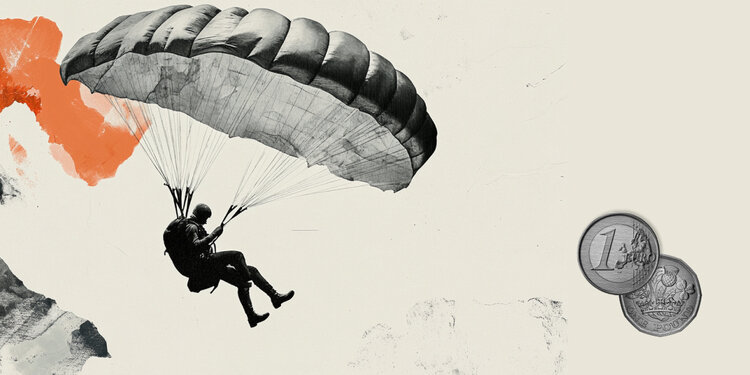EUR/GBP sticks to gains around 0.8635-0.8640 area after UK data/German CPI
- EUR/GBP regains positive traction and draws support from a combination of factors.
- The mixed UK macro data lifts BoE rate cut bets and undermines the British Pound.
- Higher German core CPI lends some support to the shared currency and spot prices.
The EUR/GBP cross attracts fresh buyers near the 0.8400 mark and stalls the previous day's sharp retracement slide from its highest level since August 23. Spot prices stick to positive bias around the 0.8435-0.8440 region following the release of the UK macro data and the final German Consumer Price Index (CPI) print.
The UK Office for National Statistics (ONS) reported that the economy returned to expansion and grew 0.1% in November after declining 0.1% in the previous month. Other data from the UK showed that monthly Industrial and Manufacturing Production dropped more than expected, by 0.4% and 0.3%, respectively, in November. This comes on top of Wednesday's softer consumer inflation figures from the UK and offers the Bank of England (BoE) an opportunity to cut interest rates in February. Adding to this concerns about the UK’s fiscal situation and the risk of stagflation – a combination of high inflation and weak economic growth – undermine the British Pound (GBP).
The shared currency, on the other hand, draws some support from a rise in German core annual inflation, which crept higher to 3.3% in December from 3.0% in the previous month. This turns out to be another factor that remains supportive of the bid tone surrounding the EUR/GBP cross. The data, however, raises stagflation worries for the Eurozone's largest economy and reaffirms expectations for further interest rate cuts by the European Central Bank (ECB). This might cap gains for the Euro and warrants some caution for bullish traders around the currency pair, making it prudent to wait for acceptance above the very important 200-day SMA before placing fresh bets.
Economic Indicator
Gross Domestic Product (MoM)
The Gross Domestic Product (GDP), released by the Office for National Statistics on a monthly and quarterly basis, is a measure of the total value of all goods and services produced in the UK during a given period. The GDP is considered as the main measure of UK economic activity. The MoM reading compares economic activity in the reference month to the previous month. Generally, a rise in this indicator is bullish for the Pound Sterling (GBP), while a low reading is seen as bearish.
Read more.Last release: Thu Jan 16, 2025 07:00
Frequency: Monthly
Actual: 0.1%
Consensus: 0.2%
Previous: -0.1%
Source: Office for National Statistics
Forex News
Keep up with the financial markets, know what's happening and what is affecting the markets with our latest market updates. Analyze market movers, trends and build your trading strategies accordingly.
